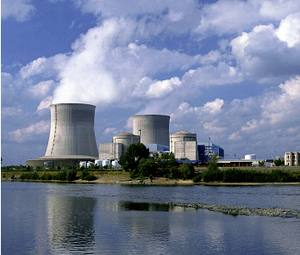Nuclear terrorismU.S. nuclear facilities vulnerable to terrorist attack: study
Some U.S. nuclear facilities are inadequately protected against theft of weapons-grade materials and sabotage by terrorists. Terrorist attacks on vulnerable nuclear facilities could trigger a meltdown or lead to a diversion of bomb-grade uranium. The danger is far from hypothetical since the 9/11 hijackers are known to have considered flying a passenger jet into a U.S. nuclear reactor before they settled on the World Trade Center as their main terror target.

Report indicates inadequate defense against theft or terrorist action // Source: techpro.com.vn
In a July 2013 paper and presentation at the annual meeting of the Institute of Nuclear Materials Management (INMM), the Nuclear Proliferation Prevention Project (NPPP), located the LBJ School of Public Affairs, University of Texas at Austin, reported that some U.S. nuclear facilities are inadequately protected against theft of weapons-grade materials and sabotage by terrorists.
The most vulnerable reactors are in California, Connecticut, Florida, Massachusetts, Maryland, Missouri, North Carolina, New York, Texas, and Virginia.
An NPPP release reports that the INMM paper and presentation were both based on a longer NPPP Working Paper #1, “Protecting U.S. Nuclear Facilities from Terrorist Attack: Re-assessing the Current ‘Design Basis Threat’ Approach,” co-authored by former NPPP graduate research assistant Lara Kirkham and NPPP coordinator Alan J. Kuperman.
The NPPP notes that nuclear power plants are not required to protect against a credible terrorist attack such as occurred on 9/11. Even some U.S. government nuclear facilities are not protected against a credible threat because security officials argue that terrorists do not value the sites or that the consequences would not be catastrophic. To the contrary, the paper explains, it is impossible to know which high-value nuclear targets are preferred by terrorists, or which attacks would have the gravest consequences.
Accordingly, the NPPP recommends that Washington should require a level of protection at all potentially high-consequence U.S. nuclear targets — including both power reactors and facilities with bomb-grade material — which is sufficient to defend against a maximum credible terrorist attack. To meet this standard at commercial facilities, the U.S. Nuclear Regulatory Commission (NRC) should upgrade its “design basis threat,” and the U.S. government should provide the requisite additional security that is not supplied by the private-sector licensees.
The Working Paper served as the basis for a major new report, which NPPP will released at 1 p.m. EDT on Thursday, 15 August 2013.
The report notes that terrorist attacks on vulnerable nuclear facilities could trigger a meltdown or lead to a diversion of bomb-grade uranium. The report stresses that the danger is far from hypothetical since the 9/11 hijackers are known to have considered flying a passenger jet into a U.S. nuclear reactor before they settled on the World Trade Center as their main terror target.
The report was prepared at the request of the U.S. Department of Defense, and its findings have implications for all U.S. power reactors and some university research reactors.
The news event accompanying the report’s release will feature report co-author Alan Kuperman.
You may join the live, phone-based news conference (with full, two-way Q&A) at 1 p.m. EDT/noon CDT on 15 August 2013, by dialing 1 (800) 860-2442. Ask for the “NPPP Nuclear Terrorism” news event.
If you cannot participate, a streaming audio replay of the news event will be available by 5 p.m. EDT/4 p.m. CDT on 15 August at http://www.nppp.org.
